Is This the Hardest Part for You, Too?
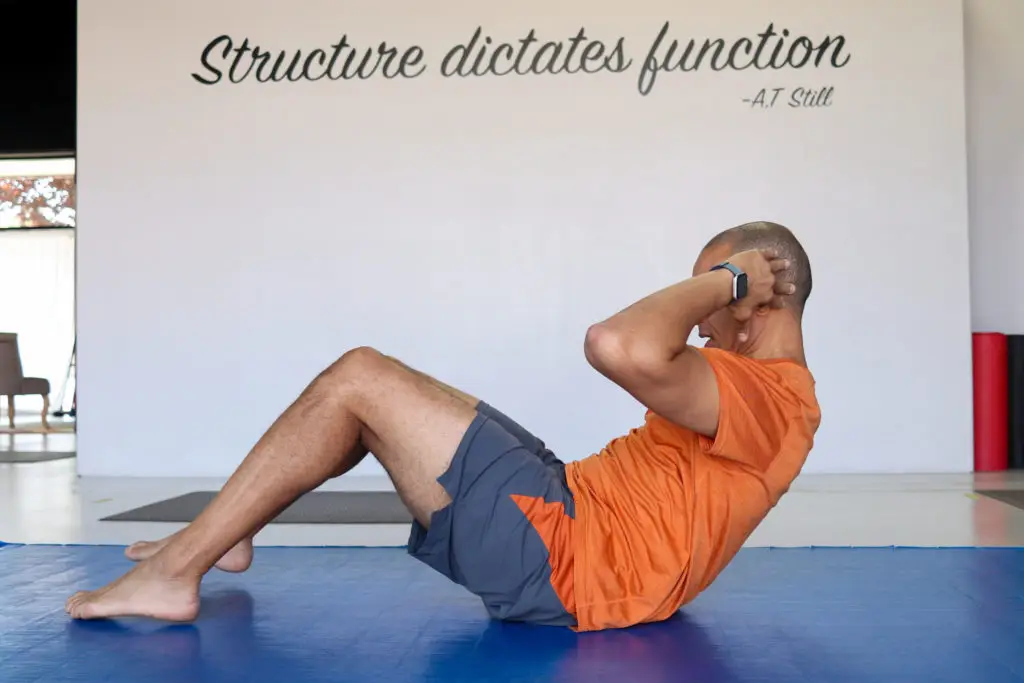
Starting something anything often feels like the hardest part.
A healthy habit.
A fitness program.
A big career move.
Even cleaning your garage.
That first step can feel bigger than the entire journey. But here’s the truth: once you start, it nearly always gets easier.
This isn’t a motivational sound bite it’s physics. Newton’s First Law of Motion: A body at rest tends to stay at rest, and a body in motion tends to stay in motion. Your brain and body aren’t all that different. The trick is bypassing the inertia and just getting that first action in motion.
This Applies to All Kinds of Stuck
This post isn’t just for people who need to begin a health and fitness program. It’s also for anyone stuck in the same loop of routines, avoiding something they know they should change but haven’t yet incorporated.
You don’t need to move the entire mountain in a day.
You just need to nudge the first rock.
The “One Small Step” Formula
When your brain resists starting something big, shrink it down to the smallest possible commitment. Tell yourself you’ll just do one easy thing.
Want to get to the gym?
- Step 1: Put on your workout clothes and sneakers.
- Step 2: Okay, you’re dressed—might as well walk to the car.
- Step 3: Well, you’re at the gym now—might as well do your workout.
It’s the same principle used in recovery programs: focus only on today, or even this one next step.
How I Tricked Myself into a Tougher Routine
I’ve used this on myself with corrective exercises. I didn’t want to do them they were uncomfortable, they challenged my ego, and I “wanted to keep doing what I’d always done.”
But I also knew:
If I wanted a different result, I had to do something different.
So here’s the self-care mind trick I used:
- I told myself, “I’ll just lay on the floor while I watch a show.”
- Once I was there, “I’ll do one easy stretch.”
- “Hey, that felt pretty good maybe one more.”
Fifteen minutes later, I had completed my entire routine.
The biggest hurdle wasn’t the physical work it was overcoming the mental block that made the task feel bigger than it was.
Why This Works
- Removes overwhelm: You don’t have to do it all—just start.
- Builds momentum: One action naturally leads to another.
- Reduces resistance: Small asks feel safe, so your brain doesn’t sabotage with excuses.
- Rewards immediately: Quick wins make you more likely to keep going.
Your Turn: Try the “Small Step” Shift
Whatever’s been on your mind whether it’s starting regular workouts, improving your nutrition, organizing your schedule, or finally addressing chronic pain try asking:
“What’s the smallest thing I can do right now that moves me toward my goal?”
Then do just that. Let momentum do the rest.
Reflect & Reply
Think about one thing you’ve been putting off big or small. What’s the tiniest step you can take toward it today? Drop me a reply, and I’ll help you see how that step can lead to a chain of momentum. And if your goal is health, energy, or mobility, the [HOLISTIC EXERCISE AND FITNESS PROGRAM] is designed to help you start small and build into something life-changing.
It’s not just working out, it’s building a foundation for a better life.
Find out more @
Daily Habits Lead to Big Outcomes
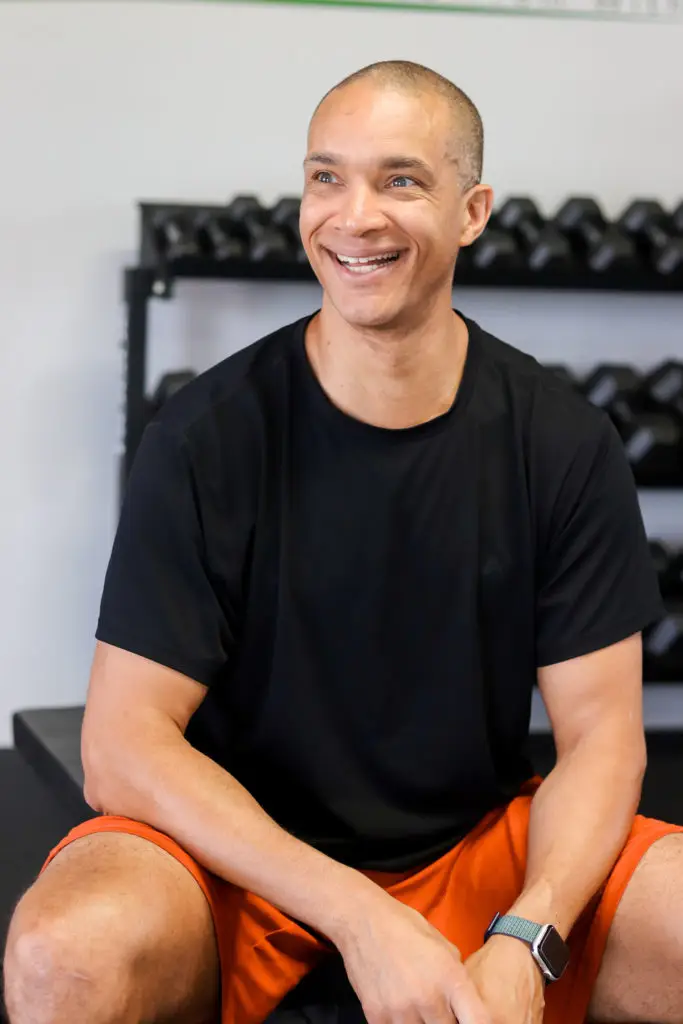
We’ve all heard the old saying:
“A journey of 1,000 miles begins with a single step.” 💯
And yet, when it comes to improving our health, strength, mobility, or mindset, it’s easy to forget the first-step principle.
Why? Because we live in a marketing culture that sells instant results miracle diets, miracle workouts, and one-size-fits-all “hacks.” The truth… and maybe the uncomfortable part? Most of the meaningful, lasting results in life don’t happen instantly.
They happen because of small, consistent actions done day after day until they add up to something huge.
The Power of Small, Consistent Actions
Big change doesn’t come from one Herculean effort. It comes from stacking simple, doable steps until they compound into transformation.
It’s the same wisdom that made the book Atomic Habits such a success: start molecular-small, repeat with intention, and let your brain and body adapt slowly until the new behaviors are automatic.
This is also classic delayed gratification—making a small sacrifice or adjustment now in order to enjoy a much bigger payoff later.
How This Shows Up in Real Life
- Financial Example: If I save 10% of my paycheck every time I get paid, my retirement fund grows steadily without panic or deprivation later.
- Nutrition Example: If I reduce my junk snacks by just one in the first week, over time I can reduce them all—without shocking my system or feeling like I “quit everything.”
- Fitness Example: If I start lifting a weight that feels easy, build strength with it, then increase the load gradually, I can go from beginner to strong without injury or burnout.
- Body Care Example: If I add just one corrective exercise or self-care stretch each week—and keep doing it—within a year, I have 52 new tools to keep my body balanced, fascia healthy, and joints happy.
Why This Works So Well
- It feels doable. The brain resists huge, daunting changes. Small steps bypass the overwhelm.
- It builds success momentum. Every small win builds confidence and consistency.
- It compounds. Small actions done daily add up over weeks, months, and years.
- It becomes your identity. Consistent action rewires your habits until they’re simply “who you are” now.
The Mindset Shift You Need
Instead of chasing instant gratification, commit to the long view:
- Have a vision of what you want.
- Make one small change at a time that moves you toward that vision.
- Recognize that the biggest rewards may come weeks or months from now.
When you can accept that delayed gratification is worth it, you move from “dabbling” to truly transforming your health and life.
Small hinges swing big doors. You don’t need to overhaul everything today—you just need to keep showing up for the next small step. Over time, those tiny steps re-shape your routines, your body, and your life.
If you can commit to a clear vision, take small and steady actions, and trust the payoff will come, you’ll be amazed at what’s possible. If you want a plan mapped out for you, designed to build these habits and keep you progressing without burning out, the [HOLISTIC EXERCISE AND FITNESS PROGRAM] will guide you from step one all the way to your destination. Why not start that first step today?
It’s not just working out, it’s building a foundation for a better life.
Find out more @
Why Confusion Kills Your Health & Fitness Progress (And How to Break Through)
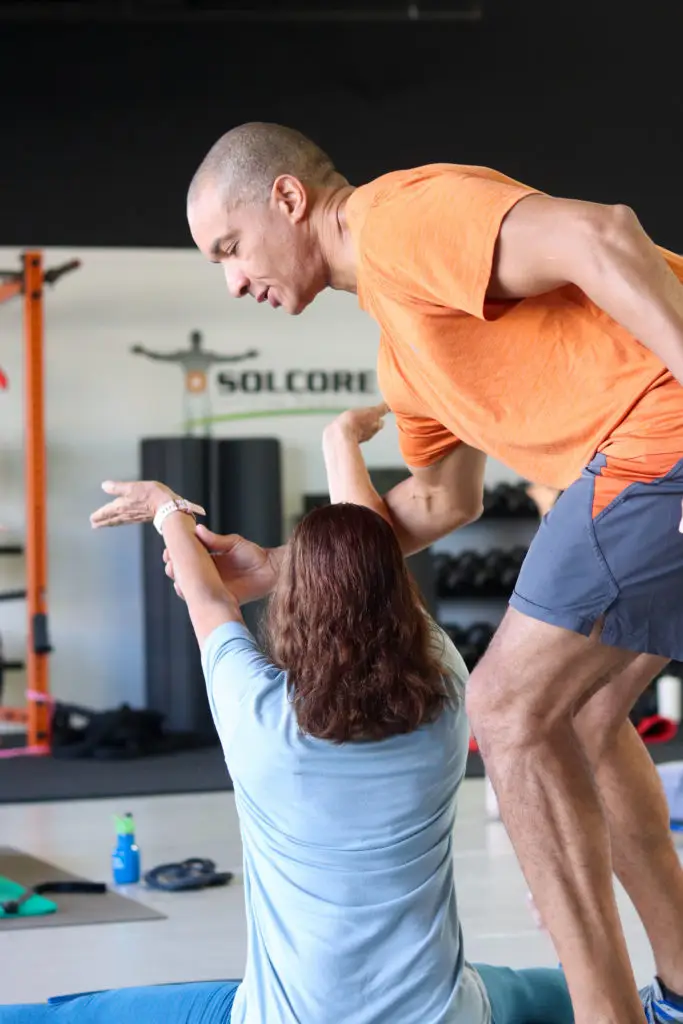
Confusion is one of the biggest roadblocks to achieving your health and fitness goals. It creates paralysis, steals motivation, and keeps even the most determined people stuck in the same frustrating place.
But where does confusion actually come from? Why does it hit so many, no matter how much desire or discipline they start with? And most importantly how can you clear the fog and get traction?
Let’s break it down.
The Three Main Sources of Confusion
- Not Understanding Your Body’s Needs
- Everyone’s anatomy, injury history, lifestyle, and goals are unique. Without clarity about what your body requires, you waste time copying cookie-cutter programs or mismatched routines.
- Chasing Results From Other People’s Blueprints
- Maybe your friend lost weight with intermittent fasting, or a “fit-fluencer” swears by their 45-minute HIIT routines. But what works for them—and their body type, schedule, and health status—won’t necessarily work for you. Cloning someone else’s plan rarely leads to lasting progress.
- The Research Rabbit Hole
- Information is everywhere! But endless Googling, watching YouTube, or scrolling forums muddies the water. Ironically, the more options you consider, the more overwhelmed (and less decisive) you become. This is especially true if you’re “researching” out of fear of making a wrong move.
Too Much Info… Not Enough Action
Don’t get me wrong—education is powerful. But if you find yourself gathering information without ever applying it, or desperately cobbling plans together from different sources but never acting, recognize this:
Perpetual learning without action is avoidance, fueled by fear—conscious or unconscious.
Fear of not choosing perfectly. Fear of failing. Fear of discomfort. But none of this leads to results.
The Big Question: What Are You Actually Afraid Of?
If you catch yourself bogged down in confusion, ask: What am I really afraid of? Sometimes the answer is straightforward: embarrassment, pain, wasting time. Other times, it’s deeper: not being “enough,” being judged, or feeling out of control.
The point is, if you use “I just need to learn a little more” as your reason for staying stuck, you’ll never act. And until you do, nothing changes.
Are You Trying to Become a Practitioner… Or Just Get Results?
If your goal is not to be a professional trainer or therapist, stop pressuring yourself to acquire a PhD in exercise science. Trust the guidance of qualified people who’ve “been there, done that.” If you ignore decades of experience and insist on being the expert, you’re not being cautious—you’re being self-defeating.
Learn by Doing
Progress comes when you:
- Take action—even a small step—so you can see and feel what works for you.
- Observe and reflect—How does your body respond? What do you enjoy? Where do you struggle?
- Adjust as you go—Be open to pivots, but don’t scatter your effort. Stick with a plan long enough to create data (and adaptation).
- Put ego aside—Admit when a method isn’t delivering, seek feedback, and accept a beginner’s mindset.
Follow this checkpoint process:
- Act
- Reflect
- Adjust
- Repeat—with a focus on your own vision, not someone else’s “success story.”
The Fog Will Lift—If You Move
As you start moving forward, confusion dissipates. Your general desire to get “fit” or “strong” becomes more nuanced maybe it’s about improving mobility, building energy for grandkids, or overcoming stiffness from old injuries. You’ll stop spinning your wheels and start building momentum.
Need help with lifting that fog? Book a complimentary consultation where we’ll clarify:
- Where you are and where you want to go
- The most effective actions for your goals
- What’s holding you back (and how to move past it)
- Action steps to bridge the gap between confusion and confidence
Your goals are just waiting for you to clear the mental clutter and step forward.
If you’re ready to end the confusion and put knowledge into meaningful motion, the [HOLISTIC EXERCISE AND FITNESS PROGRAM] is designed to guide you from overwhelm to outcomes. Let’s connect and make your next step the most effective one yet.
It’s not just working out, it’s building a foundation for a better life.
Find out more @
“Workout on Your Terms” Why That Idea Can Keep You Stuck
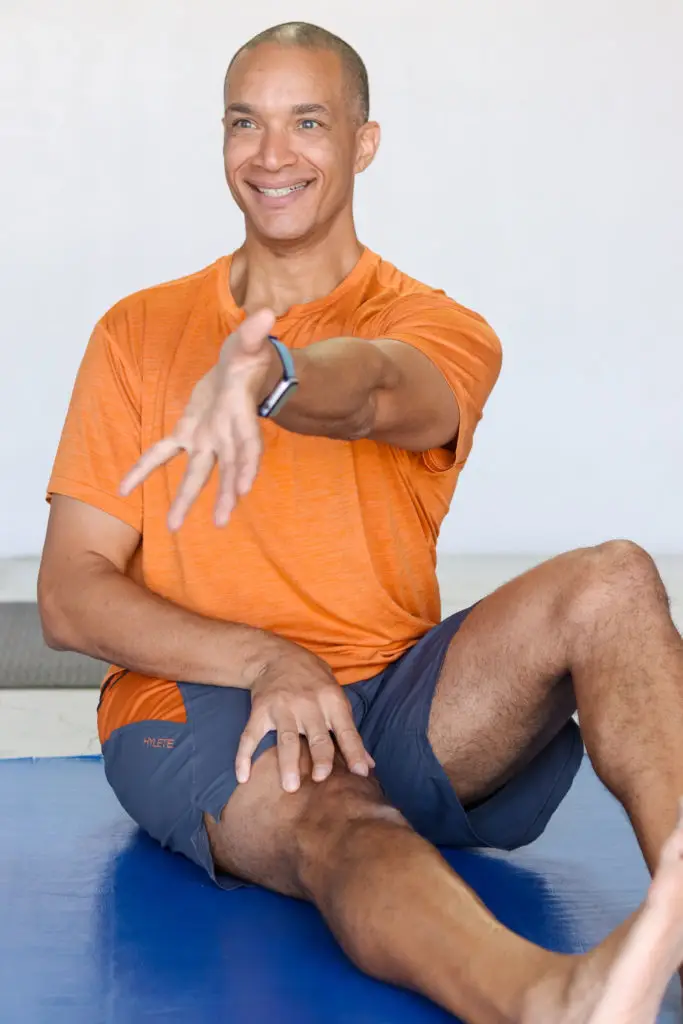
I keep seeing ads for gadgets and programs promising you can “work out on your terms”—do what you like, when you like, and it will be “all you need” for success.
From a feel-good marketing standpoint, great. From a physiological and results standpoint? Not so much. But I get it, the time to work on yourself is always now, and you want it fast!
Here’s the reality:
If your only measurement of success is “I moved, I sweated, I finished, and something told me what to do,” congrats you’re getting some benefit. And for some people, that’s all they want. But if you have specific goals whether it’s increasing mobility, building strength, reducing pain, improving posture, or extending healthy years random workouts you like will never get you all the way there.
You’ve Always Had a Plan for Big Goals in Life
If you think about it, the things you value most didn’t happen randomly:
- Education: You didn’t earn your degree by taking only classes that “sounded fun.” You followed a sequence to build knowledge and skills.
- Career: You didn’t get to your current position by bouncing aimlessly from one unrelated job to another—you made strategic choices.
- Parenting: If you have kids, chances are you chose your partner and planned your family; you didn’t leave it entirely to chance.
So why would your physical goals arguably the foundation for enjoying everything else in life—be any different?
Random Activity vs. Purposeful Programming
Cross‑training for variety can be great, but “variety” is not the same as “holistic” or “complete.”
A true holistic program will:
- Address all systems—strength, mobility, posture, fascia health, joint integrity, cardiovascular conditioning—in the right sequence.
- Include progressive overload where needed and active recovery when essential.
- Contain exercises you may not like or that challenge your comfort zone because growth always happens outside the easy zone.
Random acts of movement no matter how sweaty—won’t magically align to fix your posture, strengthen your weakest points, or address your long-term goals.
Why “Workout on Your Terms” Feels Good But Can Fail You
That concept is appealing because:
- You avoid doing anything uncomfortable or unfamiliar.
- You don’t need to confront weaknesses directly.
- You feel a sense of accomplishment just for showing up and moving.
But here’s the problem your body adapts specifically to what you do. If your goal requires improved spinal mobility, fascia hydration, or balanced strength, and you never target those specifically, you’ll keep missing the mark.
Choosing a Plan Eases Confusion and Accelerates Results
If you’ve been caught in the Workout on My Terms → Stuck Progress → Try Something Else → Still Stuck loop, the way out is simple:
- Be clear about your goal.
- Follow a plan designed to get you there—even if it includes things you wouldn’t naturally choose.
- Track progress and adjust instead of hopping around endlessly.
The Uncomfortable Truth
100% of the time, a complete program will include exercises you’re not great at and maybe don’t love when you start. But they’re there for a reason—they’re the bridge between where you are now and where you say you want to be.
If you’re only doing “what you like” in “ways you like,” those weak links stay weak, which means your overall results stall… and frustration grows.
If you’re ready to break free from random workouts and actually design the path to your ideal body, mobility, and performance, commit to following a complete, structured plan. That’s exactly what we do inside the [HOLISTIC EXERCISE AND FITNESS PROGRAM] assessing where you are, clarifying where you want to go, and building a sequence that gets you there, step by step. Why guess when you could progress?
It’s not just working out, it’s building a foundation for a better life.
Find out more @
From Ego to Healing: What Suffering Can Really Teach Us
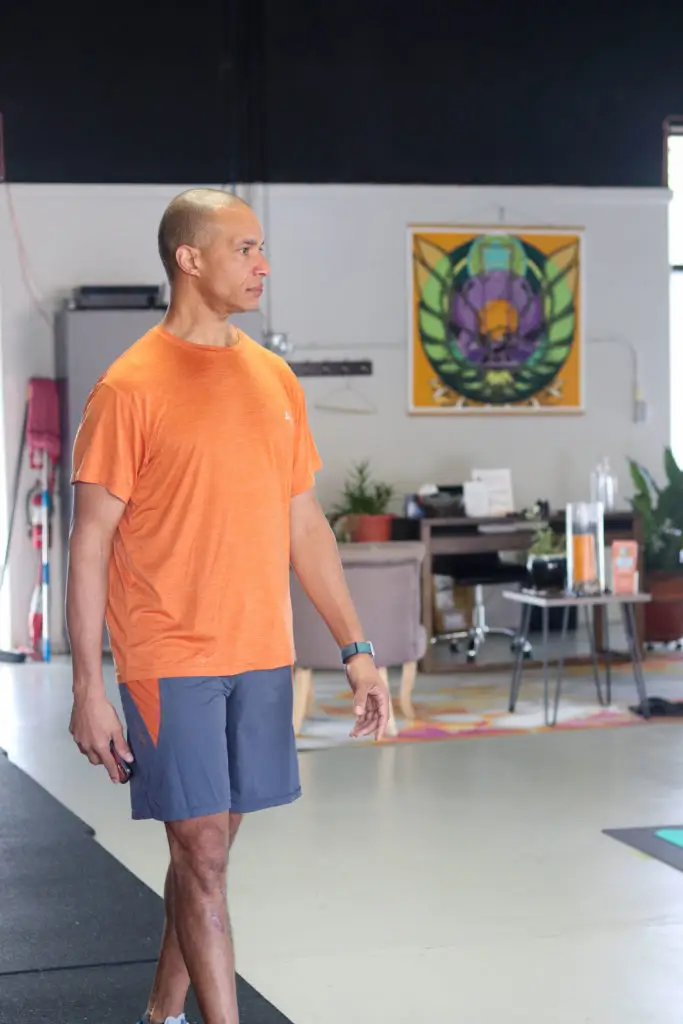
This one’s raw: It took me most of a lifetime to realize that ego my drive to keep pushing, achieving, and proving my worth was both my engine and my Achilles’ heel.
For years, I wanted to move and perform the way I knew I could. That meant doing the activities I’d always loved, the ones that fueled my confidence, felt familiar, and seemed to keep me “balanced.” In reality, it was all about being good at what I was already good at. Satisfying? Maybe. But was it making me (or my body) truly healthy and balanced? Absolutely not.
The problem was, there wasn’t much real education out there about how to get and keep your body holistically balanced—how to address dysfunction, not just performance. Eventually, lack of knowledge and ego-fueled “more is better” thinking led me to crash and burn… hard.
Beyond the Physical: A Loss of Identity
If you know my story, you know where that landed me: in pain, washed out, and confused. The physical pain was rough. But the emotional toll—the loss of identity, the internal confusion, and feelings I’d spent years outrunning almost took me down.
This is what steered me to Osteopathy and, even more importantly, to a new mindset a strategy that integrated body, emotions, and mind.
Body, Mind, and Spirit: The Real Holistic Approach
Discovering Osteopathy changed everything. It showed me that true healing doesn’t come from pushing harder; it comes from precise, integrated, and holistic training teaching the body, not just forcing it.
But the biggest revelation? My physical healing was directly tied to my willingness to start working with my emotions and mindset. The “crash and burn” wasn’t just a matter of overtraining my body; it was a matter of how I was living, thinking, and running from discomfort. Mindset books, self-help, and even Buddhism became part of my daily practice. To this day, they are essential tools for my health.
The Cost of Constantly Running
I grew up thinking achievement would erase all discomfort. I succeeded—a lot, on the outside but my anxiety ran just as high. The problem was, I assumed the suffering and stress were just “part of the deal.” It wasn’t until injury forced me to stop that I began to connect the dots: how you chase improvement matters far more than just “getting results.”
Feeling uncomfortable, I learned, isn’t just about pushing past a workout’s limits or chasing another win. It’s about actually sitting with the feelings bubbling up inside you, letting them teach you something new about boundaries, needs, and the patterns holding you back.
If you view discomfort and suffering as a signal to push harder or run away, you get stuck in a loop: feeling bad, pushing to not feel bad, ending up feeling even worse. That’s the ego trap. The breakthrough comes when you allow yourself to pause and listen.
Suffering as a Teacher
“Suffering has a cause,” Buddhist tradition teaches. I’ve seen it in myself and everyone I coach. Suffering is a message. The willingness to “get friendly” with it to become curious instead of defensive changes everything. Your physical health, your mindset, and even your relationships transform.
Reflective Questions for Growth
- Have you noticed yourself repeating the same behaviors because they feel familiar even when they stop serving you?
- Can you see patterns in your life (physical pain, emotional shutdown, relationship friction) that are messages, not punishments?
- Do you mistake emotional discomfort for a sign to push harder, when it’s really a call to look deeper?
If so, you’re not alone. I’m with you, and so is everyone who’s ever tried to out-run their own feelings or ego only to realize the finish line never appears.
Bringing It All Together: Physical and Emotional Integration
Here’s what I’ve found and why I teach [OSTEOPATHIC EXERCISE AND THERAPY TECHNIQUES] as just one part of real wellness:
- The body needs precise information, not just “more effort.”
- The mind needs compassion, not criticism, when discomfort appears.
- Emotions are teachers. Not easy ones, but the most transformative you’ll ever have.
You don’t have to keep suffering. You don’t need to keep running. The hardest pill to swallow is often the best medicine: Slowing down, feeling what’s really there, and using holistic, integrated methods to move forward—body, mind, and spirit.
Your challenge: Pause for a moment this week. Notice where your old strategies have outlived their usefulness. If you’re ready to connect the dots between physical healing and emotional growth, let’s explore it together with the [OSTEOPATHIC EXERCISE AND THERAPY TECHNIQUES] in our programs, or with honest conversation about what you’re experiencing.
The process isn’t always easy, but it is priceless. If you’ve had a similar lesson or transformation, I’d love to hear your story let’s walk the next steps together.
It’s not just working out, it’s building a foundation for a better life.
Find out more @
Why Most Resolutions Fail and What to Do Instead

Every January, millions set New Year’s resolutions. And every February… the majority have quietly dropped them. It’s such a predictable cycle that it’s almost a cultural joke.
But if we know most resolutions fail, the question is: Why? And more importantly, how can you avoid falling into the same trap no matter what month it is?
Let’s look at the most common reasons goals fall apart, plus solutions that will actually keep you moving forward.
Failure #1: Unrealistic Expectations
You want too much, too fast. That initial motivation pushes you to overreach.
Example:
Wanting to “become a runner” and signing up for a marathon when you haven’t jogged since high school.
Solution:
Start small and progress consistently. If running is your goal, start with something like five minutes of jogging three days per week. Add a minute or two each week. This builds both fitness and confidence while avoiding burnout or injury.
Failure #2: Going It Alone Without Accountability
When your only accountability is your own willpower, motivation fades fast.
Solution:
Find an accountability partner — a friend, workout buddy, or coach. Share your goals and check in regularly. Mutual reliance has a way of keeping you showing up, even on days you don’t feel like it.
Failure #3: Not Planning Ahead
Hoping to “fit it in when you can” means you’ll miss more days than you hit.
Solution:
At the start of each month, look at your calendar. Identify:
a) Opportunities times you can build momentum (like a light week at work).
b) Challenges travel, events, or busy seasons that might test your consistency.
Planning ahead means you can adapt instead of abandon your plan.
Failure #4: Not Reviewing and Assessing
If you never evaluate your progress, it’s easy to believe you’re failing — even when you’re moving forward.
Solution:
Set regular review points. Write down your wins, progress stats, and mindset shifts. Focus on the “gain” (how far you’ve come) rather than the “gap” (how far you still want to go). This reframing keeps you motivated.
Failure #5: Negative Self‑Talk
That internal critic can derail your consistency more than a lack of time or resources.
Solution:
Practice rising above the mental noise. Use daily affirmations. Acknowledge every improvement, no matter how small. Show gratitude for what’s going right. Help someone else — it’s a proven way to boost your own motivation and mood.
The Biggest Failure of All: No Clear Vision of Who You Want to Be
Without a vivid mental picture of your desired self, goals are just tasks. You’re more likely to give up because the “why” isn’t strong enough.
Solution:
Take 30 minutes to journal (on paper, not on a computer) about:
- Who you want to be
- What it looks like and feels like
- The emotions it sparks
Then set specific goals that bring you closer to that vision. Once you know who you’re aiming to become, the actions you take have purpose.
Bottom line: Resolutions fail when they’re vague, unrealistic, unsupported, unplanned, unreviewed, and disconnected from a bigger vision. Build your goals with the opposite in mind, and you can set them — and reset them any time of year.
Have a vision. Start small. Stay consistent. Review, adjust, and keep going. Your goals aren’t about the calendar. They’re about creating the life you want. If you want a structure that checks every one of these boxes clear vision, realistic progression, accountability, planning, regular review, and a supportive mindset the [HOLISTIC EXERCISE AND FITNESS PROGRAM] was created for exactly that. Let’s make sure your next goal is one you not only start… but finish
It’s not just working out, it’s building a foundation for a better life.
Find out more @
How to Achieve Anything You Desire with Reverse Engineering

Sometimes the quickest path forward starts by looking backward.
That’s the power of reverse engineering a method used in everything from business strategy to detective work. Instead of starting at the beginning and guessing your way to the finish line, you begin with the precise outcome you want and then map every step in reverse.
It’s a simple shift in thinking, but it removes guesswork, reduces frustration, and gives you a clear, realistic path forward.
Step 1: Envision the End Goal with Detail
First, define exactly what you want. Don’t just say “I want to get fit” or “I want to save money.” Write down every detail.
- What will it look like when you achieve it?
- What will you hear, smell, taste, and feel in that moment?
- Will you feel happy, relieved, proud, confident?
The more vivid the picture in your mind, the more anchored your motivation becomes. It transforms your goal from vague to tangible.
Step 2: Identify the Stage Right Before the Finish Line
Once you know the final picture, ask: What needs to be true for me to reach this point?
Think of it like a detective solving a case. The “last clue” might be a lab result, a witness statement, or the smoking gun. In your life, it might be:
- Successfully maintaining a fitness routine for 12 weeks straight
- Completing a certification
- Hitting a financial target
Step 3: Keep Working Backward
From that second‑to‑last step, ask the same question: What has to happen right before this stage for me to get here?
Repeat this process until you’ve created a step‑by‑step roadmap that connects your dream outcome all the way back to where you stand today.
A Practical Example: Sally’s Weight Loss Goal
Let’s say Sally wants to lose 20 pounds. She knows that safe, sustainable weight loss is about 1–2 pounds per week. That means:
- Target timeframe: ~15 weeks
- Key checkpoints: losing 5 pounds every 4–5 weeks
- Mid‑goal challenges: a major work deadline at week 8
By reverse engineering, Sally can:
- Plan her nutrition and training phases step by step.
- Build in strategies for that stressful work week so she stays on track.
- Focus on the next logical step instead of constantly guessing.
She has removed uncertainty—and with it, the likelihood of disappointment.
Step 4: Anticipate Obstacles Before They Happen
Life won’t stop while you chase a goal. Reverse engineering lets you spot upcoming challenges before they derail you. Whether it’s travel, family events, or a demanding work period, you can prepare:
- Adjust your training schedule
- Plan meals in advance
- Schedule recovery time
- Ask for accountability support
Step 5: Take the First Small, Certain Step
Once you’ve mapped backward to today, you should have a very clear first move. Make it small enough to be easy, but meaningful enough to start the chain of progress.
When you know where that step leads, you can take it with confidence.
Why This Method Works So Well
- Clarity: You know exactly where you’re heading and what it will take to get there.
- Realism: You see a feasible timeline and avoid the “too much too soon” trap.
- Motivation: The vivid end goal stays in your mind, keeping you focused.
- Adaptability: Plans can pivot when needed without losing the big picture.
Whatever your goal health, fitness, financial, or personal reverse engineering creates a roadmap from “someday” to “done.” And if your goal is to feel stronger, move better, and regain balance in your body, you don’t have to figure it out alone. The [HOLISTIC EXERCISE AND FITNESS PROGRAM] is built to reverse engineer your success starting from the results you want, and working back to the exact steps to get there. Let’s make your vision a plan you can follow with confidence.
Find out more @
Reflecting on Another Year: Never Failures, Always Lessons
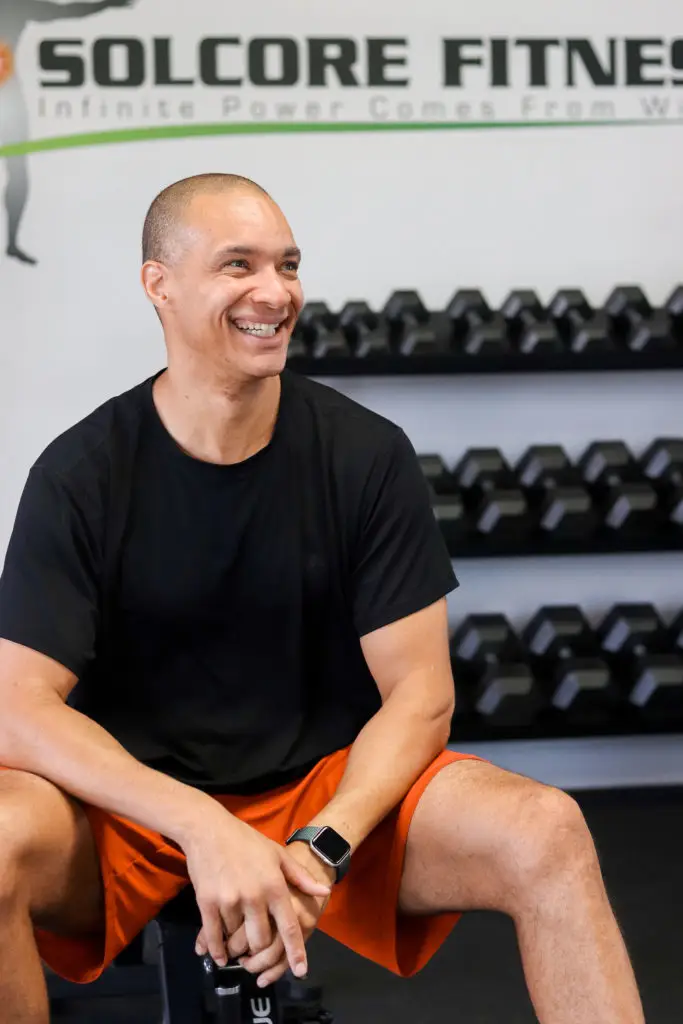
The end of the year is one of those rare times when almost everyone pauses to look both back and forward reviewing where they’ve been while eyeing where they want to go next.
But when you look over your shoulder, what do you see? Frustration and disappointment? Or pride in all you managed to move forward? Remember, none of this is about accusations or guilt. These questions are here only to sharpen your determination and your focus for the future.
Maybe last year didn’t bring you as close to your health, movement, or mindset goals as you’d hoped. If so, this is the perfect moment to reset, realign, and chart a new course. Or maybe you did have a year of progress either way, reflecting is how you steer toward an even better path.
See the Wins, See the Lessons
- If you fell short of some big vision: Use this time not for regret, but to think about what you want to shift next. Where did plans slip, and what can you set up differently now?
- If you made progress: Celebrate! Identify what worked, what lit you up, and what you want more of—and then build on it layer by layer.
- Above all: Don’t use reflection as a reason to beat yourself up. Victories and stumbles are both data—they’re not identifiers, just feedback.
The Breakthrough Mindset
There are no failures—only lessons.
Victories show you what works for you. Setbacks show you where your system or support needs an upgrade. Both move you forward, as long as you’re willing to learn and adapt.
Ask yourself:
- Where do I want to be in twelve months?
- What one or two shifts would make it almost certain I’ll get there?
- What lessons did this year hand me—about movement, self-care, or mindset—that I didn’t even realize at the time?
Carry Progress Forward, Guilt-Free
True reflection is about clarity, not self-criticism.
- Acknowledge the real wins—however small.
- Own the choices that didn’t serve you, without blame.
- Extract the wisdom—then move on, better equipped.
Focus on what you can control next, not on what’s long gone.
Use this time to set your intention for the coming year—or simply for the next season. Write it down, make it real, and let your focus shift from past stumbles to future wins. Take strength from every experience, and put it to use.
If moving forward in your health or fitness journey is part of that next chapter for you, remember you don’t have to figure it all out by yourself. The [OSTEOPATHIC EXERCISE AND THERAPY TECHNIQUES] we teach are designed to help you get out of pain, move better, and stay strong and mobile for years to come. When you’re ready to turn reflection into action, let’s team up for a fresh start.
It’s not just working out, it’s building a foundation for a better life.
Find out more @
Your Brain Might Be the No. 1 Thing Holding You Back

Do you want to know the No. 1 thing holding you back from the life you want? It’s not your family, your job, or your responsibilities.
It’s you.
More specifically, it’s your brain.
That might sound surprising, but our own minds often kick out the most persistent stories of doubt, overwhelm, and exhaustion more than any other outside influence. Think of it as an enemy within whose job is to keep you from taking the necessary action to get what you truly want.
The Lies in Your Head
Ask yourself:
👉🏽 Who tells you that you’re not this enough or that enough?
👉🏽 Who whispers that it’s a waste of time to start?
👉🏽 Who insists you’ll never get anywhere so “why bother”?
Over and over, it’s your own brain.
Why This Happens
This internal voice isn’t “natural truth.” It’s the result of conditioning past experiences, societal pressures, and programmed fears. Once you realize the liar inside your head was put there, you can start to take away its power.
The game changes when you learn to:
- Recognize the lies for what they are.
- Interrupt them in the moment.
- Replace them with something encouraging, positive, and action-based.
How to Break the Cycle
- Name it. When the voice says, “I can’t,” label it: “That’s the lie talking.”
- Choose a counter-thought. Replace the doubt with something like, “I’ve done hard things before, and I can do this.”
- Act, even if small. Show your mind you won’t be paralyzed by fear.
The more often you recognize and redirect, the weaker those old patterns become.
Why This Matters for Your Health and Fitness
When you’re trying to create change whether that’s building strength, improving mobility, or reducing pain the biggest hurdles are rarely physical at the start. They’re mental.
Skill, capacity, and results grow with action, but you have to first stop letting the “brain lies” call the shots.
If you are ready to stop believing those old inner stories and start building proof that you can succeed, the [HOLISTIC EXERCISE AND FITNESS PROGRAM] gives you the structure, accountability, and step-by-step progression to replace doubt with results. You can get where you want to go start telling yourself the truth today.
It’s not just working out, it’s building a foundation for a better life.
Find out more @
